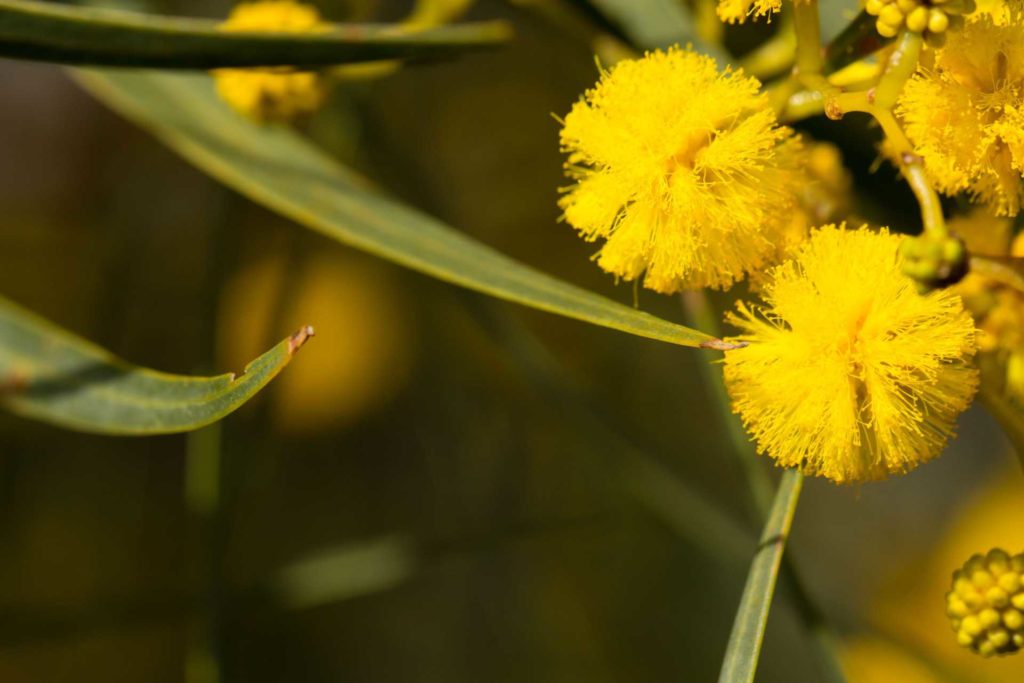Djilba is the growing season, or the season of conception. This is a transitional time of the year, roughly coinciding with August-September, with some very cold and clear days combining with warmer, rainy and windy days and the occasional sunny day or two. And some days, you’ll get a little bit of everything. This year, it’s still freezing cold and wet, but the Djilba transition means that warmer weather is on the way!
Djilba heralds the beginning of the flower explosion that occurs across Nyungar boodja each year and in particular, a time to look for yellow and cream flowers on mass. This starts with yellow flowering plants, most notably our many wattle (Acacia) species. Just to name a few, you will see bright masses of mindalleny (prickley moses or Acacia pulchella) and cujong (golden wreath wattle or Acacia saligna) blossom in the jarrah forest and coastal areas, while mungart (jam wattle) is prolific further inland.
The wannang (peppermint or Agonis flexuosa) also bursts into full flower, with cascades of beautiful, tiny, creamy-white flowers covering its weeping branches. This this signals that it’s time to go fishing for the blue-swimmer crab near the coast and estuaries. There are also still some vivid and striking blues, like the kummock (Australian bluebell creeper or Billardiera heterophylla (formerly Sollya heterophylla)), which will fruit later in the year.
Traditionally, the main food sources at this time of year included many of the land-dwelling animals as in the season before, like the yonga (grey kangaroo), waitj (emu) and koomal (brush-tailed possum). As the days start to warm up, we start to see and hear the first of the newborns with their proud parents out and about providing them food, guiding them through foraging tasks and protecting them.
The woodland birds will still be nest bound, hence the protective swooping behaviour of the koolbardi (magpie) starts to ramp up and if watched closely, so to do the djidi djidi (willy-wag-tails) and the chuck-a-luck (wattle birds) to name a couple of others. As the season progresses and the temperatures continue to rise, we’ll see the flower stalks of the balgas (grass trees) emerging in preparation for the coming Kambarang season and the much warmer weather!



